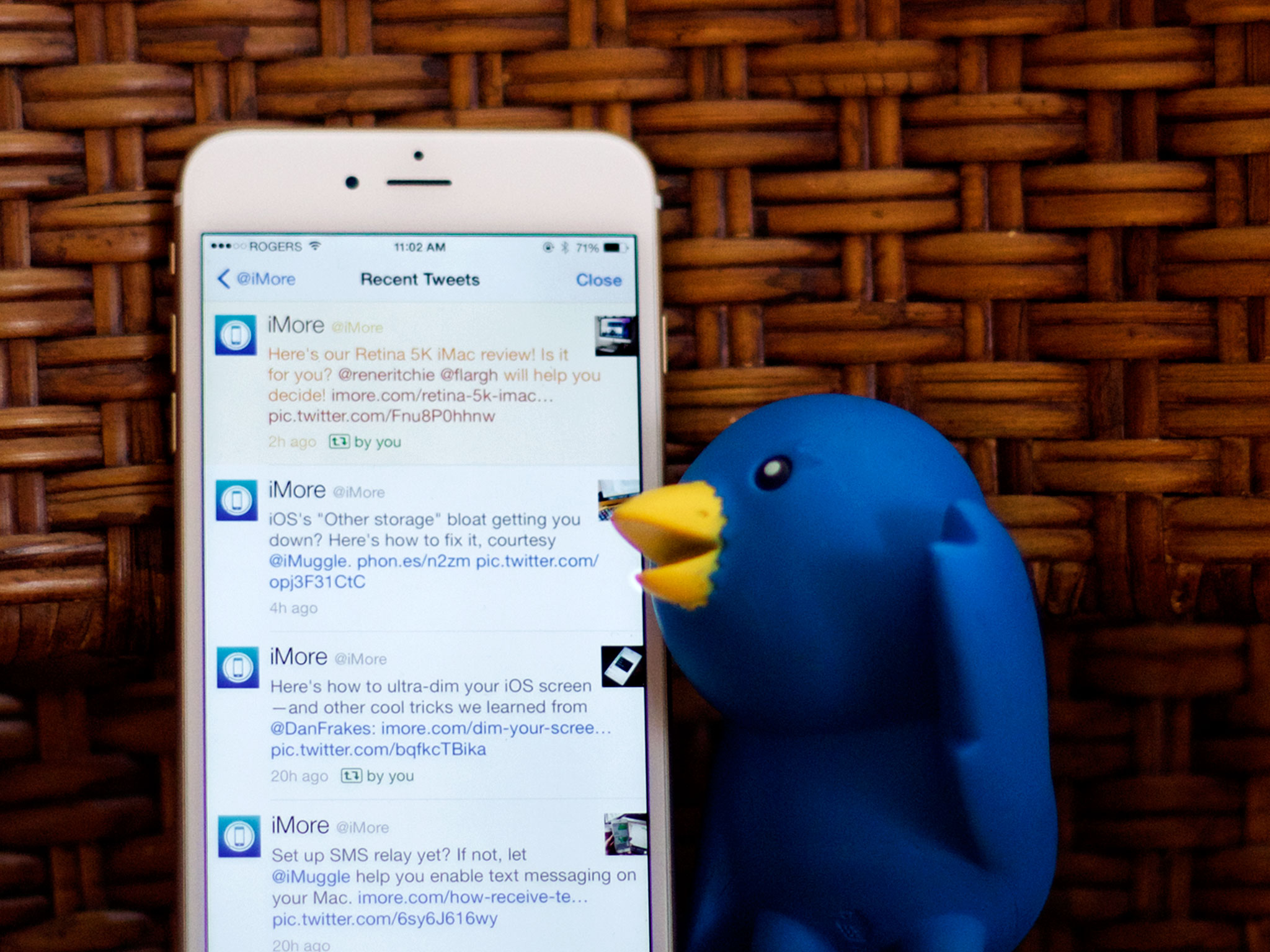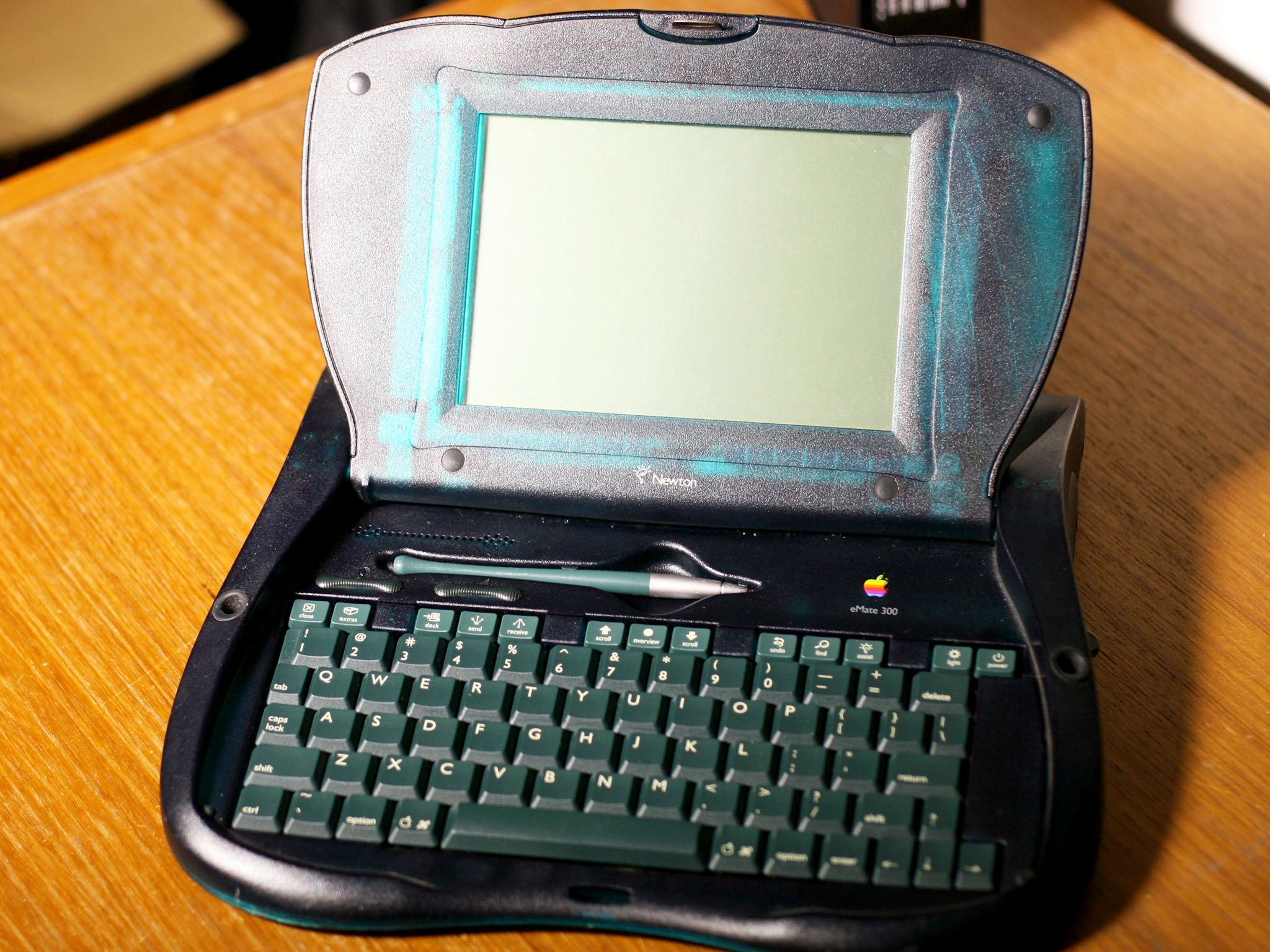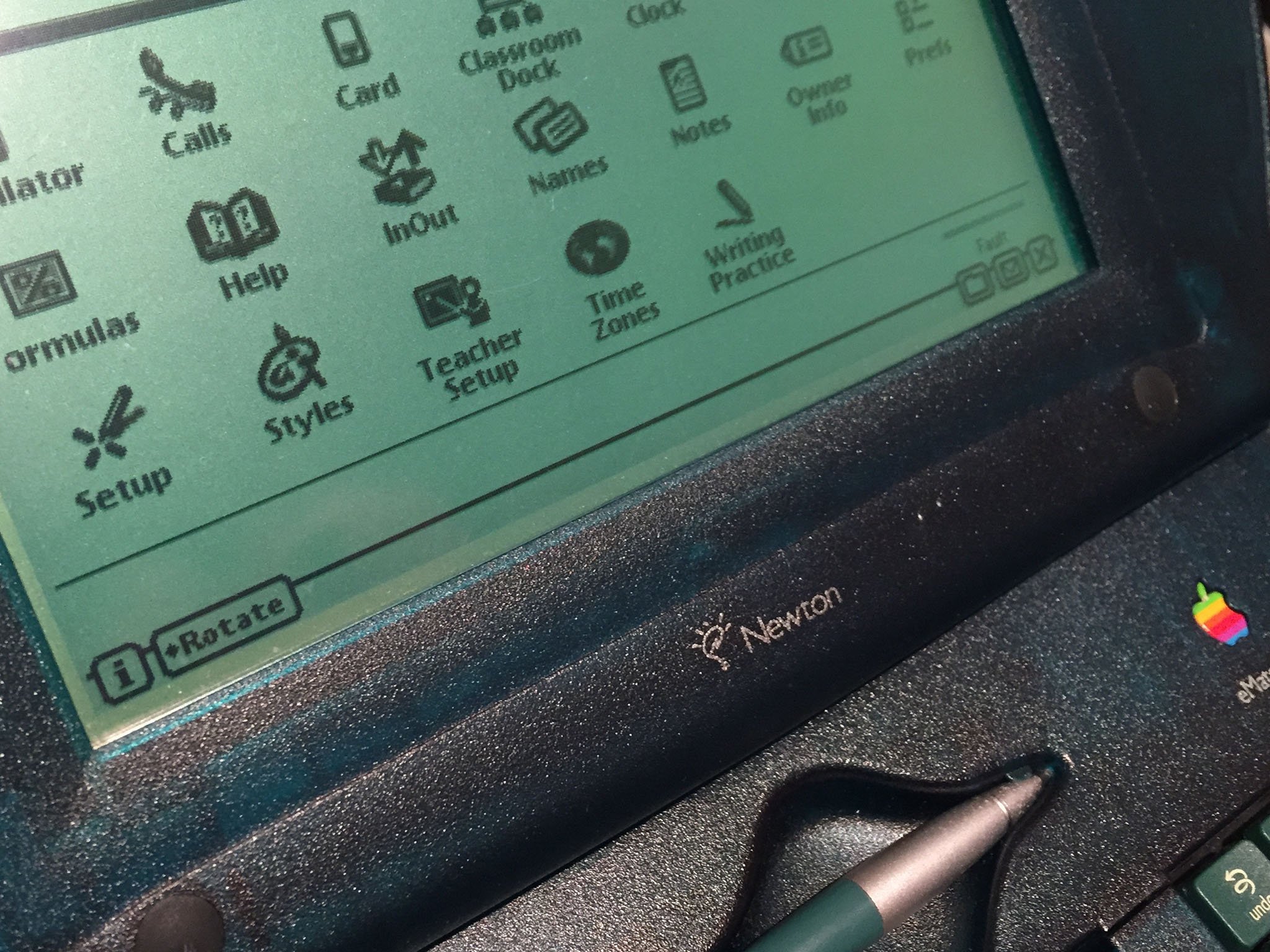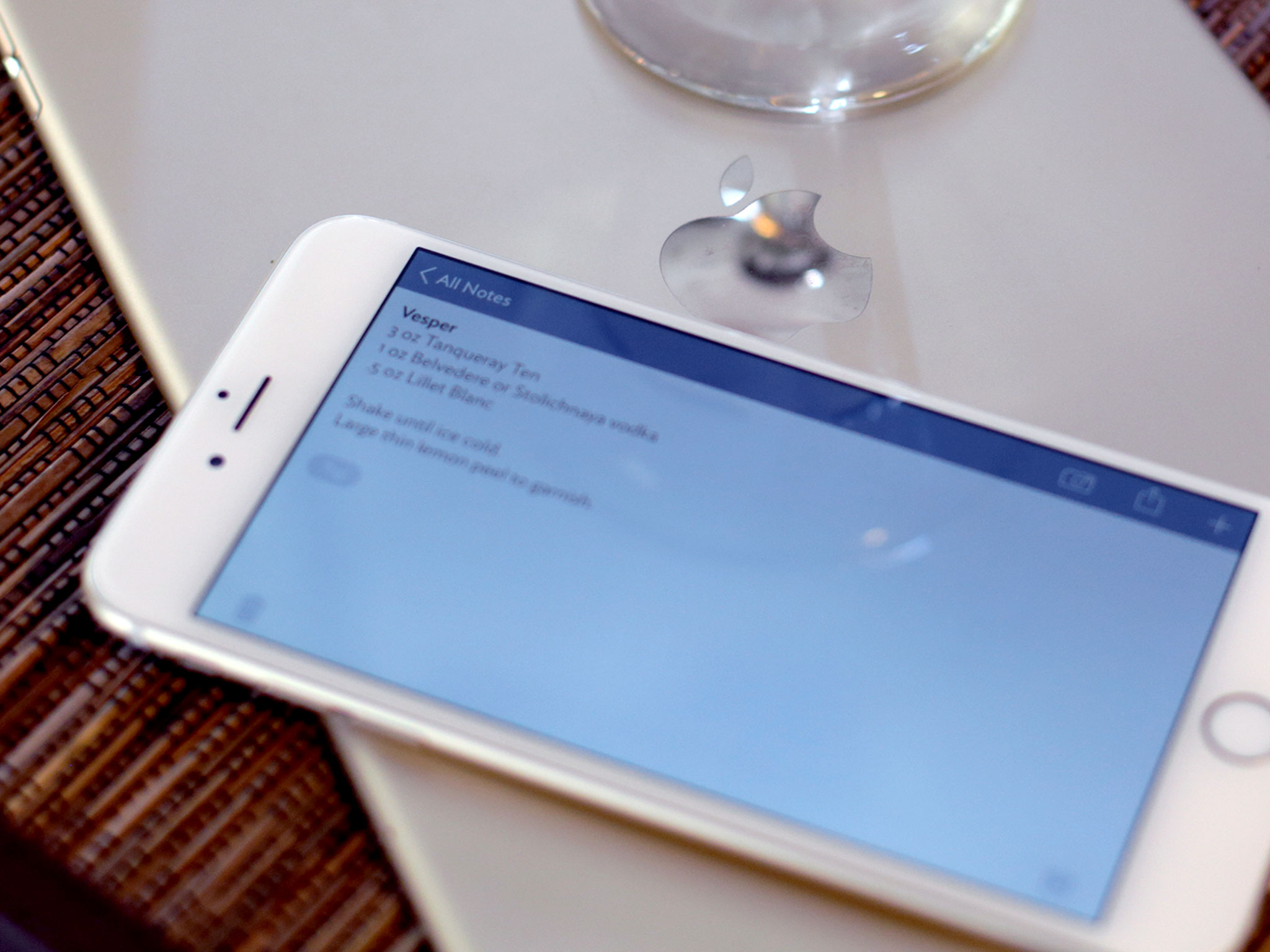Follow @iMore on Twitter for everything Apple!
- feb
- 27
- Posted by Michael
- Posted in Okategoriserade
If Twitter is where you hang your social hashtags, we’ve got two great ways for you to stay up to date with iMore!
For those who prefer a carefully curated experience, we have the main @iMore account. It brings you the very best of our original content — features, editorials, opinions, reviews, guides, and the most important news. It won’t flood your feed, but it will make sure you know about everything that matters.
For those who want absolutely every story we publish everyday, we have the @iMore_firehose account. It will bring you every story, including every bit of news we link to from morning to noon to night. It’ll make sure your feed always has the latest and the greatest updates.
If you want all the behind-the-scenes action as well, especially when we’re at special events and conferences, you can also follow our editors. Each has diverse interests, but iMore really is the sum of its people — and these are our people:
- Serenity Caldwell – @settern
- Peter Cohen – @flargh
- Georgia Dow – @Georgia_Dow
- Ally Kazmucha – @iMuggle
- Rene Ritchie – @reneritchie
Apple has also begun tweeting more regularly in recent years. Most Apple employees prefer to keep a low profile, and we respect their privacy, but Apple executives are quite public:
- Tim Cook – @tim_cook
- Angela Ahrendts – @AngelaAhrendts
- Eddy Cue – @Cue
- Phil Schiller – @pschiller
iTunes also has a bunch of accounts it uses to help promote all the content it helps deliver every week:
- App Store – @AppStore
- iBooks – @iBooks
- iTunes – @iTunes
- iTunes Festival – @iTunesFestival
- iTunes Movies – @iTunesMovies
- iTunes Music – @iTunesmMusic
- iTunes Podcasts – @iTunesPodcasts
- iTunes TV – @iTunesTV
- iTunes U – @iTunesU
For many people, Twitter is the new RSS. If you’re one of them, hope this helps keep you up-to-date!
![]()
MLB At Bat snags UI refresh, Spanish language support, more in latest update
- feb
- 27
- Posted by Michael
- Posted in Okategoriserade
We’re inching ever closer to the start of the 2015 baseball season, and the MLB At Bat app for iPhone and iPad has been updated accordingly. Some of the main highlights of the update include a refreshed UI, expanded player search, and Spanish language …
read moreVimeo gains Chromecast support, bug fixes in version 5.2
- feb
- 27
- Posted by Michael
- Posted in Okategoriserade
Vimeo has been updated to version 5.2, adding support for Google’s Chromecast. Owners of the device can now cast to it directly while watching a video in the app. When you have a Chromecast set up, start watching a video in full screen and tap the cas…
read moreThe Apple Watch, Naked Lunch, and the eMate 300
- feb
- 27
- Posted by Michael
- Posted in Okategoriserade
I hope the Apple Watch gets this weird.
All my life I’ve been fascinated by weird things. The weirder the better. Apple’s product designs were really weird for a while. Weird, and really pretty.
The weirder the better
When I was a young teen in the 1980s, few things gave me as much pleasure as reading Fangoria magazine from bloody cover to bloody cover. Fangoria was — and is — a great magazine if you’re interested in practical special effects in the movies, and at that age I was obsessed with gory movies.
One particular horror movie director who caught my attention was David Cronenberg. Cronenberg made his mark with unusual R-rated horror fare like Videodrome and my particular favorite, Scanners.
Cronenberg was tapped to direct Naked Lunch, a movie adaptation of William S. Burroughs’ surreal beat generation novel of vignettes based on his own experiences traveling internationally.
Cronenberg used nightmarish visuals in his interpretation, none more disturbing than the talking insectoid typewriter that speaks from a sphincter hidden under its shell. I found its image to be fascinating, disturbing and even stomach-churning, but I couldn’t look away.
One of Apple’s old industrial designs makes me think of the Mugwump, but if the Mugwump was cuddly, not scary. It’s the jeweled, green eMate 300, looking chitinous but oddly inviting.
The Swatch Generation
Apple’s disrupted more industries than you can shake a stick at. Nicholas Hayek disrupted an industry too, after he launched Swatch in 1983. The company manufactures watches and is based in Switzerland.
Swatches became all the rage to a generation of teens in the 1980s when they started coming out with creative and imaginative designs that matched the pop culture zeitgeist of the age.
Swatches weren’t as cheap as the knockoffs you’d find at lesser department stores and malls, but having a Swatch on your wrist became just as much of a status symbol as having a pair of Air Jordan sneakers or the right denim jacket.
A brief history of touch
We take it for granted these days that Apple has pioneered and mastered many of the techniques used in touch interface technology for smart devices. Hundreds of thousands of developers write millions of lines of code and make billions of dollars selling apps for those devices through the App Store. But this isn’t Apple’s first round of touch-based screen input technology. Years before the iPhone, years before the iPod, there was the Newton MessagePad.
The Newton was famously unsuccessful, but that didn’t stop Apple trying cool things with it. I have an original MessagePad, but my favorite piece of Newton memorabilia is my eMate 300. The eMate 300 is a laptop computer based on Newton tech.
The eMate 300 was in production for less than a year starting in 1997, but for many of us old-timey Apple fans, it was a memorable run. It ran for up to 28 hours between charges on a rechargeable battery, included networking and had an expansion card. It didn’t have a hard disk; the eMate 300 stored everything in non-volatile memory, just like today’s smart devices.
The unique translucent design of the eMate 300 was the idea of Thomas Meyerhoffer, who created the shell to evoke a sense of accessibility.
The shell suggests but doesn’t actually reveal the hardware that’s inside. There’s an air of mystery to the eMate 300, a jeweled murkiness that makes you wonder what’s inside.
The built-in keyboard made it easy to input lots of data into the device, which used a touch-sensitive LCD screen you could write on with the included stylus. Using the Newton OS is nothing like using Macs or iOS devices now, but there are familiar ideas afoot, like a document and activity-based workflow and the mirroring of real world gestures to affect what’s happening on the screen.
There was even handwriting recognition; initially it was the emphasis of many criticisms for its poor interpretation. Apple got it right, but it took them longer than it should have. By the time it got to the eMate 300 it was pretty solid.
The eMate 300 was built for smaller hands and was envisioned as a way of getting computers into the hands of schoolkids. If Apple had been in a different place with different fortunes at the time, kids all over the country might have used eMates instead of iPads, as many are now.
It was a very different Apple at a very different time, but you can still see the spirit of innovation in today’s products, right down to the Apple Watch.
It’ll be interesting to see how the Apple Watch is received by multiple generations of Apple users. As a Swatch kid, now an adult with a family of my own, I’m getting a distinct sense of deja vu.
![]()
”Skarp version av IOS 8.2 nästa vecka”
- feb
- 27
- Posted by Michael
- Posted in iOS, iOS 8, iPad, iphone, iPhone 6, iPod, MacWorld, Mobiltelefon, rykte, Surfplatta, Teknik, Ut på Twitter


Vi behöver troligtvis inte vänta till Apples event för nästa uppdatering till Iphone och Ipad.
Google Maps adds quick facts for local points of interest and more in latest update
- feb
- 27
- Posted by Michael
- Posted in Okategoriserade
Google Maps for iPhone and iPad has been updated. The app will now help you find businesses near an address that you search for. You can also find quick facts about local landmarks. Users can also now find information for upcoming events from select v…
read morePatentbråket mellan Ericsson och Apple trappas upp
- feb
- 27
- Posted by Michael
- Posted in Apple, Ekonomi, Ekonomi/Bransch, iphone, iPhone 6, MacWorld, Mobiltelefon, Ut på Twitter
Vesper now lets you collect your thoughts in landscape — and on iPad!
- feb
- 27
- Posted by Michael
- Posted in Okategoriserade
Vesper — the thought-collection app by Brent Simmons, Dave Wiskus, and John Gruber — has been updated to support Apple’s new adaptive interface frameworks. And yes, that means Vesper now lets you note and tag in landscape and on your iPad.
Big screen notes and images are one thing, but being able to have all your notes follow you from iPhone to iPad — thanks to Vesper sync — is another. It makes what a useful but dedicated place to keep your thoughts into a universal place to store and access them.
I’ve been using it since it went into beta and the transition really has been pulled off with the usual Q Branch minimalism and elegance.
The newly universal version of Vesper is available in the App Store store at the introductory sale price of $7.99. It’s available as a free update to existing users.
- $7.99 on sale – Download now
Disclosure: I co-host a podcast with Dave Wiskus so check other reviews and get a well-rounded sense of the app if you’re at all unsure about it.
![]()
Dead Trigger developer Madfinger announces upcoming zombie shooter Unkilled
- feb
- 27
- Posted by Michael
- Posted in Okategoriserade
Madfinger, the development team behind the Dead Trigger mobile zombie-themed shooter game series, have announced plans to launch yet another zombie first person shooter. It’s called Unkilled and it’s due for release in June. Here’s what Madfinger says…
read moreFormer Apple retail chief Ron Johnson talks about designing the first Apple Stores
- feb
- 27
- Posted by Michael
- Posted in Okategoriserade
Former Apple retail head Ron Johnson has shared some of the lessons that he’s learned during his time in retail, including things he learned at Apple. Johnson shared a story about a discussion he had with Steve Jobs before the opening of the first Appl…
read moreSenaste inläggen
- Rykte: Apple planerar att släppa vikbara enheter
- Rykte: Apple planerar en vikbar 20,3-tums hybrid för 2025 och en vikbar Iphone för 2026
- Apple Watch har fått status som ett medicinskt verktyg
- Så ser du Apples ‘Let Loose’-event
- Så ser du Apples ‘Let Loose’-event
Senaste kommentarer
Arkiv
- maj 2024
- april 2024
- mars 2024
- februari 2024
- januari 2024
- december 2023
- november 2023
- oktober 2023
- september 2023
- augusti 2023
- juli 2023
- juni 2023
- maj 2023
- april 2023
- mars 2023
- februari 2023
- januari 2023
- december 2022
- november 2022
- oktober 2022
- september 2022
- augusti 2022
- juli 2022
- juni 2022
- maj 2022
- april 2022
- mars 2022
- februari 2022
- april 2021
- mars 2021
- januari 2021
- december 2020
- november 2020
- oktober 2020
- september 2020
- augusti 2020
- juli 2020
- juni 2020
- maj 2020
- april 2020
- mars 2020
- februari 2020
- januari 2020
- december 2019
- november 2019
- oktober 2019
- september 2019
- augusti 2019
- juli 2019
- juni 2019
- maj 2019
- april 2019
- mars 2019
- februari 2019
- januari 2019
- december 2018
- november 2018
- oktober 2018
- september 2018
- augusti 2018
- juli 2018
- juni 2018
- maj 2018
- april 2018
- mars 2018
- februari 2018
- januari 2018
- december 2017
- november 2017
- oktober 2017
- september 2017
- augusti 2017
- juli 2017
- juni 2017
- maj 2017
- april 2017
- mars 2017
- februari 2017
- januari 2017
- december 2016
- november 2016
- oktober 2016
- september 2016
- augusti 2016
- juli 2016
- juni 2016
- maj 2016
- april 2016
- mars 2016
- februari 2016
- januari 2016
- december 2015
- november 2015
- oktober 2015
- september 2015
- augusti 2015
- juli 2015
- juni 2015
- maj 2015
- april 2015
- mars 2015
- februari 2015
- januari 2015
- december 2014
- november 2014
- oktober 2014
- september 2014
- augusti 2014
- juli 2014
- juni 2014
- maj 2014
- april 2014
- mars 2014
- februari 2014
- januari 2014
Kategorier
- –> Publicera på PFA löp
- (PRODUCT) RED
- 2015
- 25PP
- 2nd gen
- 32gb
- 3D Touch
- 3D-kamera
- 4k
- 64gb
- 9to5mac
- A10
- A9X
- Aaron Sorkin
- Accessories
- adapter
- AirPlay
- AirPods
- Aktiv
- Aktivitetsarmband
- Aktuellt
- Alfred
- AMOLED
- Android Wear
- Angela Ahrendts
- Ångerätt
- announcements
- Ansiktsigenkänning
- app
- App Store
- Appar
- Apple
- Apple Beta Software Program
- Apple Book
- Apple CarPlay
- Apple Event
- Apple iMac
- Apple Mac Mini
- Apple Macbook
- Apple MacBook Air
- Apple MacBook Pro
- Apple Macos
- Apple Maps
- Apple Music
- Apple Music Festival
- Apple Music Radio
- Apple Offer
- Apple Online Store
- Apple Park
- Apple Pay
- Apple Pencil
- Apple Podcast
- Apple Store
- Apple Store 3.3
- Apple TV
- apple tv 4
- Apple TV 4K
- Apple Watch
- Apple Watch 2
- Apple Watch 8
- Apple Watch 9
- Apple Watch Apps
- Apple Watch SE
- Apple Watch Series 2
- Apple Watch Sport
- Apple Watch Ultra
- AppleCare
- AppleTV
- Application
- Applications
- Apps
- AppStore
- Apptillägg
- Apptips
- AppTV
- April
- Arbetsminne
- armband
- Art Apps
- Återköp
- återvinning
- Åtgärdsalternativ
- atvflash
- Audio Apps
- Augmented REality
- Back-to-school
- Bakgrundsbilder
- BankId
- Barn
- Batteri
- batteriskal
- batteritid
- Beats
- Beats 1
- Beats Solo 2 Wireless
- Beats Solo2
- Bebis
- Beginner Tips
- Belkin
- Bendgate
- beta
- Beta 3
- betaversion
- betaversioner
- bilddagboken.se
- bilder
- bilhållare
- billboard
- Bioteknik
- Blendtec
- Bloomberg
- Bloons TD 5
- Bluelounge
- Bluetooth
- Böj
- Booking.com
- Borderlinx
- bose
- bugg
- Buggar
- Buggfixar
- Butik
- C More
- Calc 2M
- Camera
- Campus 2
- Canal Digital
- Carpool Karaoke
- Caseual
- Catalyst
- CES 2015
- Chassit
- Chip
- Chrome Remote Desktop
- Chromecast
- citrix
- clic 360
- CNBC
- Connect
- Cydia
- Dagens app
- Dagens tips
- Damm
- Danny Boyle
- Data
- datamängd
- Datorer
- Datortillbehör
- Datum
- Defense
- Dekaler
- Designed by Apple in California
- Developer
- Development
- Digital Inn
- Digital Touch
- Digitalbox
- DigiTimes
- Direkt
- Discover
- display
- DisplayMate
- Dive
- Docka
- Dräger 3000
- Dropbox
- Droples
- DxOMark
- E-post
- earpod
- EarPods
- Earth Day
- Eddie Cue
- eddy cue
- Educational Apps
- Ekonomi
- Ekonomi/Bransch
- El Capitan
- Elements
- ElevationLab
- Elgato Eve
- Elgato Eve Energy
- EM 2016
- Emoji
- emojis
- emoticons
- Enligt
- EU
- event
- Eventrykten
- EverythingApplePro
- Faceshift
- facetime
- Fäste
- Featured
- Features
- Feng
- Film / Tv-serier
- Filmer
- Filstorlek
- Finance Apps
- Finder For AirPods
- Finland
- FireCore
- Fitbit
- Fitness Accessories
- Fjärrstyr
- Flurry
- Födelsedag
- fodral
- Förboka
- Force Touch
- förhandsboka
- Första intryck
- Forumtipset
- foto
- FoU (Forskning och Utveckling)
- Fource Touch
- Foxconn
- FPS Games
- Framtid
- Fre Power
- Frontpage
- Fullt
- Fuse Chicken
- Fyra
- Gadgets
- Gagatsvart
- Gamereactor
- Games
- Gaming
- Gaming Chairs
- Gästkrönika
- General
- Gigaset
- Gitarr
- Glas
- GM
- Google Maps
- Google Now
- gratis
- grattis
- Guide
- Guider
- Guider & listor
- Guld
- hack
- Halebop
- hållare
- Hälsa
- Hårdvara
- HBO
- HBO Nordic
- Health
- Health and Fitness
- Health and Fitness Apps
- Hej Siri
- Helvetica Neue
- Hemelektronik
- Hemknapp
- Hemlarm
- Hermes
- Hitta min iphone
- Hjärta
- högtalare
- HomeKit
- HomePod
- hörlurar
- htc
- Hue
- Humor
- i
- I Am A Witness
- IBM
- iBolt
- iBomber
- iBook
- icar
- iCloud
- iCloud Drive
- iCloud Voicemail
- iCloud.com
- iDevices
- IDG Play
- idownloadblog
- iFixit
- ikea
- iKörkort
- iLife
- Illusion Labs
- iMac
- IMAP
- iMessage
- iMessages
- iMore Show
- Incipio
- InFuse
- Inspelning
- Instagram-flöde
- Instrument
- Intel
- Internet/Webbtjänster
- iOS
- iOS 10
- iOS 12
- iOS 17
- iOS 18
- iOS 5
- iOS 7
- iOS 8
- iOS 8 beta
- iOS 8.1.3
- iOS 8.2
- iOS 8.3
- iOS 8.4
- iOS 8.4.1
- iOS 9
- iOS 9 beta 4
- iOS 9.1
- iOS 9.1 beta 2
- iOS 9.2
- iOS 9.2.1
- iOS 9.3
- IOS Games
- ios uppdatering
- ios9
- iPad
- iPad Accessories
- iPad Air
- iPad Air 2
- iPad Air 3
- iPad Apps
- iPad Mini
- iPad mini 4
- iPad Mini 6
- iPad mini retina
- iPad Pro
- iPados
- iphone
- iPhone 12
- iPhone 14
- iPhone 14 Pro
- iPhone 15
- iPhone 16
- iPhone 17
- iPhone 5
- iPhone 5S
- iPhone 5se
- iPhone 6
- iphone 6 plus
- iPhone 6c
- iPhone 6s
- iPhone 6S plus
- iPhone 7
- iPhone 7 display
- iPhone 7 Plus
- iPhone 7s
- iPhone Accessories
- iPhone Apps
- iPhone SE
- iphone x
- iPhone XS
- iPhone XS Max
- iPhone7
- iPhoneGuiden
- iPhoneguiden.se
- iPhones
- iPod
- iPod Nano
- iPod shuffle
- ipod touch
- iSight
- iTunes
- iWatch
- iWork
- iWork för iCloud beta
- Jailbreak
- James Corden
- Jämförande test
- Jämförelse
- Jet Black
- Jet White
- Jönssonligan
- Jony Ive
- Juice Pack
- Juridik
- Just mobile
- kalender
- kalkylator
- Kamera
- Kameratest
- Karriär/Utbildning
- Kartor
- Kevin Hart
- keynote
- Keynote 2016
- KGI
- KGI Security
- Kina
- Klassiskt läderspänne
- Kod
- Kollage
- koncept
- konceptbilder
- köpguide
- krasch
- Krascha iPhone
- Krönika
- Kvartalsrapport
- Laddhållare
- laddningsdocka
- Laddunderlägg
- läderloop
- lagar
- Lagring
- Lajka
- Länder
- lansering
- laserfokus
- Layout
- leather loop
- LG
- Liam
- Lifeproof
- Lightnigport
- lightning
- Linux
- LinX
- live
- Live GIF
- Live Photos
- Live-event
- Livsstil
- Ljud & Bild
- Logitech
- LOL
- Lösenkod
- Lösenkodlås
- Lovande spel
- LTE
- Luxe Edition
- M3
- M3TV
- Mac
- Mac App Store
- Mac Apps
- Mac Mini
- Mac OS
- Mac OS X
- Mac OS X (generellt)
- Mac OS X Snow Leopard
- Mac Pro
- Macbook
- Macbook Air
- Macbook Pro
- Macforum
- Macintosh
- macOS
- Macs
- MacWorld
- Made for Apple Watch
- magi
- Magic
- MagSafe
- Martin Hajek
- matematik
- Meddelanden
- Media Markt
- Medieproduktion
- Mediocre
- Messaging Apps
- Messenger
- MetaWatch
- Mfi
- Michael Fassbender
- microsoft
- Mikrofon
- Minecraft
- Ming-Chi Kuo
- miniräknare
- minne
- Mixer
- Mixning
- Mjukvara
- mobbning
- Mobile Content
- Mobilt
- Mobilt/Handdator/Laptop
- Mobiltelefon
- Mockup
- Mophie
- mors dag
- moto 360
- Motor
- MTV VMA
- multitasking
- Music
- Music Apps
- Music, Movies and TV
- Musik
- Musikmemon
- MW Expo 2008
- native union
- Nätverk
- Navigation Apps
- nedgradera
- Netatmo Welcome
- Netflix
- Netgear Arlo
- News
- Niantic
- Nike
- Nikkei
- Nintendo
- Nöje
- Norge
- Notis
- Notiscenter
- nya färger
- Nyfödd
- Nyheter
- Officeprogram
- Okategoriserade
- OLED
- omdöme
- Omsättning
- OS X
- OS X El Capitan
- OS X Mavericks
- OS X Yosemite
- Outlook
- Övrig mjukvara
- Övrigt
- PanGu
- papper
- patent
- PC
- pebble
- Pebble Smartwatch
- Pebble Steel
- Pebble Time
- Pebble Time Steel
- Persondatorer
- Petter Hegevall
- PewDiePie
- Philips
- Philips Hue
- Phones
- Photoshop
- Planet of the apps
- Plex
- Pluggar
- Plus
- Plusbox
- Podcast
- Podcast Apps
- Pokemon
- Pokemon Go
- Policy
- Porträttläge
- PP
- Pris
- priser
- problem
- Problems
- Productivity Apps
- Program
- Prylar & tillbehör
- Publik
- publik beta
- QuickTime
- räkenskapsår
- räkna
- ram
- RAM-minne
- Rapport/Undersökning/Trend
- Rea
- Reading Apps
- recension
- Red
- reklaamfilm
- reklam
- reklamfilm
- reklamfilmer
- rekord
- Rendering
- reparation
- Reportage
- Reptest
- ResearchKit
- Retro
- Review
- Ring
- Ringa
- Rocket Cars
- Rosa
- Rumors
- Rumours
- RunKeeper
- rykte
- Rykten
- Safir
- Säkerhet
- Säkerhetsbrist
- Samhälle/Politik
- samsung
- Samtal
- San Francisco
- SAP
- security
- Series 2
- Servrar
- Shigeru Miyamoto
- Sia
- Siri
- SJ Min resa
- skal
- Skal iPhone 6
- skal iPhone 6s
- skärm
- SKärmdump
- Skärmglas
- Skribent
- skribenter medarbetare
- Skriva ut
- skruvmejsel
- skydd
- Skyddsfilm
- Skype
- slice intelligence
- Smart
- smart hem
- Smart Home
- Smart Keyboard
- Smart klocka
- Smart Lights
- smartphone
- Smartwatch
- Snabbt
- Snapchat
- Social Apps
- Software
- Solo2
- sommar
- Sonos
- Sony
- soundtouch
- Space Marshals
- spår
- Speakers
- Special Event
- Spel
- Spelkonsol
- Spellistor
- Split Screen
- Split View
- Sport
- Sportband
- Sports Apps
- spotify
- Spring forward
- Statistik
- Steve Jobs
- Stickers
- Stockholm
- Stor iPhone
- Storlek
- Story Mode
- Strategy Games
- streama
- Streaming
- stresstest
- Ström
- Studentrabatt
- stylus
- Super Mario Run
- support
- Surf
- Surfplatta
- svenska
- sverige
- Sverigelansering
- Switch
- Systemstatus
- Systemutveckling
- tåg
- Taig
- Tangentbord
- Taptic Engine
- Tårta
- tät
- Tävling
- Taylor Swift
- Teknik
- tele 2
- Telefoner
- Telekom
- Telia
- Test
- Tid
- TikTok
- Tile
- tillbehör
- Tim Cook
- TIME
- TimeStand
- Tiny Umbrella
- Tips
- Toppnyhet IDG.se
- Touch ID
- TouchID
- tower defence
- trådlös laddning
- Trådlösa hörlurar
- trådlöst
- trailer
- Travel Apps
- Tre
- TrendForce
- TripAdvisor
- Trolleri
- trump
- TSMC
- Tum
- tv
- tvätta
- tvOS
- tvOS 9.2
- tvOS beta 2
- Tweak
- Typsnitt
- Ubytesprogram
- UE MegaBoom
- Unboxing
- Underhållning/Spel
- unidays
- United Daily News
- Unix
- Updates
- Uppdatera
- uppdatering
- Upplösning
- upptäckt
- USA
- Ut på Twitter
- utbyte
- utbytesprogram
- Utilities Apps
- Utlottning
- utrymme
- utvecklare
- varumärke
- Vatten
- Vattentålig
- vattentät
- vävt nylon
- Verktyg
- Viaplay
- Vibrator
- video
- Videoartiklar och webb-tv (M3/TW/CS)
- Villkor
- viloknapp
- Virtual Reality
- Virus
- visa
- Vision Pro
- VLC
- Volvo on call
- W1
- Waitrose
- Watch OS
- WatchOS
- WatchOS 2
- watchOS 2.0.1
- watchOS 2.2
- Webbtv (AppTV)
- wi-fi
- Wifi-samtal
- Windows
- Windows 8
- WWDC
- WWDC2015
- yalu
- Youtube
- Zlatan







